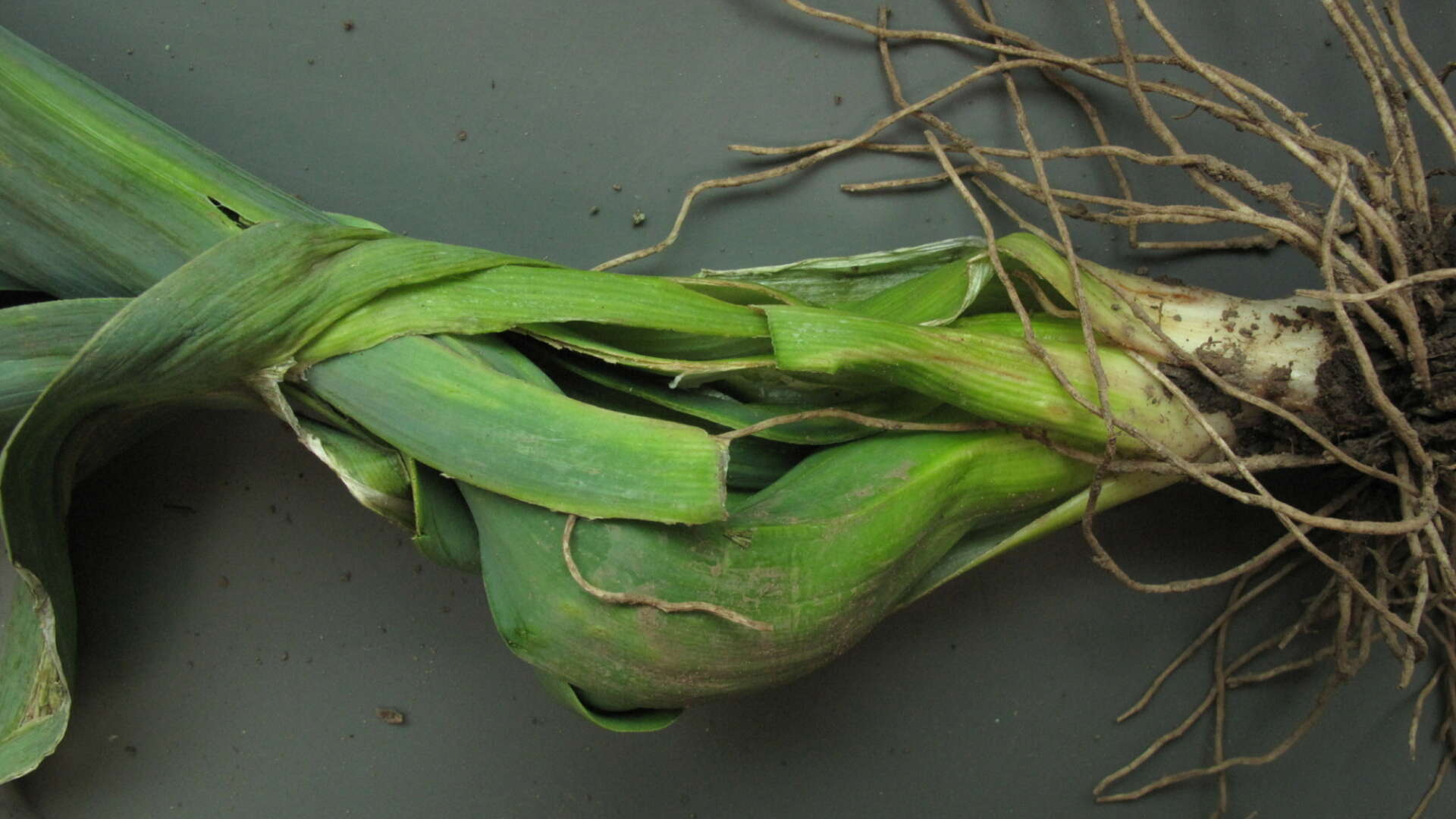Take part in our allium leaf miner survey
Allium leaf miner (Phytomyza gymnostoma) is a serious pest that affects all allium crops. It first arrived in the Midlands in 2002, and since then, has rapidly spread around the country.

Garden Organic last did a survey of allium leaf miner with the Organic Growers’ Alliance in 2011. The survey showed that there were many siting’s around the Midlands but it had spread to other areas of the UK as well.
We suspect that it has spread much further now, and would like to repeat the survey to find out which areas it is now affecting. The deadline is 31 January but there is no need to wait, you can tell us about your experiences with growing alliums over the last few years. Even if you do not have problems with allium leaf miner, we would like to know which areas are still free from the pest.
You can take part in our allium leaf miner survey here.
We suspect that it has spread much further now, and would like to repeat the survey to find out which areas it is now affecting. The deadline is 31 January but there is no need to wait, you can tell us about your experiences with growing alliums over the last few years. Even if you do not have problems with allium leaf miner, we would like to know which areas are still free from the pest.
You can take part in our allium leaf miner survey here.
What does it look like?
You are most likely to notice the larvae of the allium leaf miner as a small creamy maggot burrowing into the plants. You may also notice the pupae which are shiny brown and about the size of a grain of rice. Be careful not to confuse with the leek moth caterpillar which has a brown head and distinct legs. You are less likely to notice the adults, which are small grey flies, that only spend enough time on the plant to lay eggs.
What are the symptoms?
The first obvious symptoms are a very pronounced twisting of the leaves. Later, the stems start to split, then eventually disintegrate, and the crop is often rotten before harvesting time.
How much damage does it do to crops?
Allium leaf miner causes the stems to collapse and rot as the maggots tunnel through the tissue. Even mild infestations leaves maggots and pupae in large enough numbers to render parts of the crop inedible. Most infestations will result in significant losses and it is possible to lose the entire crop.
When is it a problem?
The flies have two main egg laying periods, one in March and another in September to October. Damage will start to be noticed a few weeks after eggs have been laid.
What crops does it affect?
Allium leaf miner will affect all allium crops, including leeks, onions, garlic, shallots, spring onions and chives. It causes the most damage in leeks, and can cause large losses in spring onions and chives. Garlic seems to be the least affected.
What can be done to avoid it?
The only way of controlling it is to cover the crop with fine mesh at the times of egg laying (see above). Allow at least a few extra weeks either way to take account of regional weather variations. When growing leeks, it may be necessary to cover the transplants in the trays as eggs can be laid in them, which means the crop is infected as it is being planted into the ground. It is important to grow alliums in a different place each year, as pupae can remain in the soil over winter and carry over into the next crop.